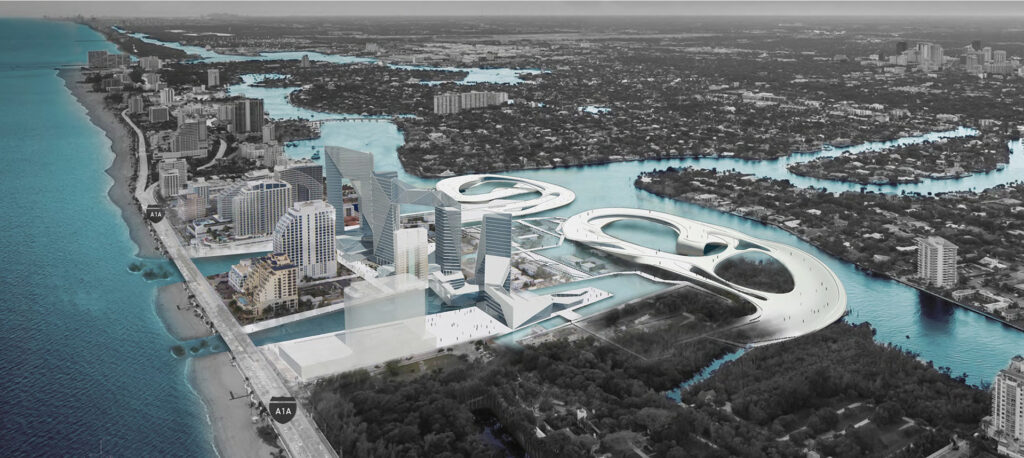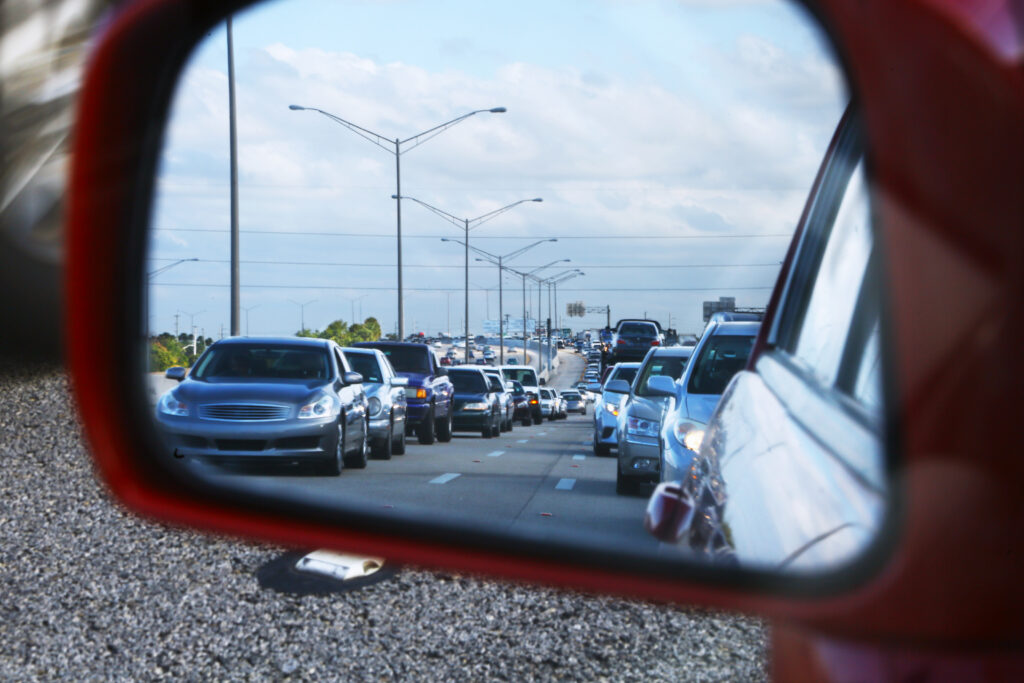By Stacey Balkan
Our imaginations are shaped by the infrastructure that we inhabit; they also embolden us to aspire for a better future.
Built infrastructure, as we know intimately in South Florida, is not only subject to the organic erosion of materials like limestone — the literal bedrock of our sinking state. It is also vulnerable to climate conditions. Lest we concede to permanent evacuation, our increasingly precarious coastal infrastructure may need to be reimagined.
This spring, I taught a Ph.D. seminar entitled “Theorizing Infrastructure” for Florida Atlantic University’s graduate program in comparative studies. Our curriculum included a capstone assignment for which students were to redesign shared-use infrastructure in South Florida.
The projects were intended as innovations for a more sustainable region, informed by our extensive reading in the growing fields of energy and infrastructure humanities. The results were nothing short of magnificent!

In preparation, students read across an extraordinarily interdisciplinary body of work, including histories of the early drainage campaigns that allowed for settlement in the lower portion of our peninsular state, the “salty urbanism” imagined by regional planners seeking to erect adaptive infrastructures in places like Miami Beach and works of science fiction that envision possible futures for our coastal home despite projections about sea level rise.
Florida writer Karen Russell’s tale of environmental adaptation “The Gondoliers” and Gabriel Ojeda-Sagué’s book-length poem “Losing Miami” further inspired students to glimpse opportunity — even in the face of what Ojeda-Sagué terms “permacrumble” to name the eroding seascapes of his childhood home.
Their capstone projects would reflect such sentiments. They were to speculate about brighter futures than those too often centered in the apocalyptic fictions that plague local cinema outlets and popular streaming platforms. The students actually “built” them, narratively speaking: whether retrofitting Miami’s “permacrumble,” or even imagining alternative pasts – speculating on possible trajectories for a South Florida that was never drained.
In our field, we know that infrastructure is aspirational. It is built in the service of worlds to come. Infrastructure projects mobilize a collective imagination — materializing desire, or “worldbuilding” to use a well-worn term in literary studies. Cityscapes, for example, are the built environments produced by community desire and perceived social need: Transportation networks respond to the daily routines of commuters and commerce, transporting workers and shoppers to central business districts.
The term infrastructure — infra, or “below,” and structure — implies relationship. Accordingly, a prominent member of the growing fields of energy and infrastructure humanities (Stephanie LeMenager) has described infrastructure as a relationship between different scales — for example, the habits/needs of the individual worker/consumer in relation to shared networks of transport and production.
When scaled up, this relationship operates similarly, although mobilizing a far vaster network of so-called resources, in some cases across a planetary (rather than municipal or national) scale. Global logistics models have been designed to meet the extraordinary demands of this vast infrastructural network, whose outsized reach is often invisible to the end user.
The field of energy humanities has sought to make this relationship more visible for some time now. Energy humanists, as we are called, think about the relationship between popular cultural forms (such as literature or film) and energy infrastructures like electric grids and pipelines.
We think about how our “energy imaginations” are impacted by popular culture — that is, how a novel or a film reinforces certain beliefs about the world and occasionally helps to conceal the often-invisible infrastructures that enable our greatest joys.

Isn’t it strange, one critic asks, that there is scant attention paid to gas stations in readings of Jack Kerouac’s 1957 novel “On the Road”? What resource presumably fueled their adventure other than whimsy? What fuels the feeling of freedom in this classic novel of self-discovery published in the immediate wake of the 1956 Federal-Aid Highway Act? Surely, anyone who has spent a substantial amount of time on Interstate 95 might ask even more questions about the so-called road novel: What about traffic?
Of course, discussions around transportation infrastructures and the role/impact of something like petroleum are far more popular today than they were in 1957; as are terms like sustainability and resiliency, particularly down here in South Florida. Oil companies, among them Shell Energy (or Qatar Energy, formerly Qatar Petroleum) have even boasted of diversifying their investment portfolios; and auto manufacturers like Cadillac are asking consumers to embrace the “exuberance” of electricity.
It would seem that the race toward renewables has created an easy fix for a warming world: “electrify everything,” some say. This also accounts for the meteoric rise of electric vehicles and the popularity of the Tesla brand (even though Teslas and Rivians are, as we know, still stuck in traffic).
There is much debate around “transition” owing to the environmental (and human) costs of alternatives such as electrification; there is far less discussion around the infrastructure that will have to move these vehicles (and house our endangered communities) in a rapidly changing world. Enter the infrastructure humanities and the push to imagine possibility in the ruins of the crumbling bridges and roadways that no longer support transport and commerce as they once did; not to mention, forms of community flourishing and joy that seem increasingly, tragically, out of reach for many.
Hence our final projects, which ranged wildly in scope:

- One student described a future Liberty City where residents, many of whom are now being priced out of their communities, will live in more adaptive infrastructures that also celebrate their shared heritage.
- A student of industrial design imagined and built (literally) a “living, regenerative” infrastructure based upon the “Indigenous wisdom of the Seminole and Miccosukee tribes.”
- A student in literary studies travels through time in order to anticipate the infrastructural demands of a future Marco Island whose municipal water supports are no longer compromised.
- A child welfare advocate brought to life a future Miami of vertical gardens and residences, interwoven to ensure not only “resilience,” but community.
- Another architect designed a floating, elevated “eco-community” that harnesses local energies, rather than seeking to domesticate them, while also attending to what we term “affective infrastructure” through an emphasis on local fauna.
- And a conceptual artist and devoted community member imagined a sanctuary for the exponentially growing communities of feral cats who might be accommodated rather than exterminated, while also providing another much-needed community space in Lake Worth.
In spite of the seemingly insurmountable divides that continually stifle progress toward collaborative worldbuilding in these times, the work of such students demonstrates the very real possibility of a future for all Floridians. Nonpartisan, visionary and brilliant, these students are truly the stewards of a better tomorrow.
Stacey Balkan is an associate professor of environmental literature and humanities, and program coordinator for the undergraduate minor in environment and society and graduate certificate in environmental studies at FAU. Essays written by students in the “Theorizing Infrastructure” course can be found here. Banner photo: South Florida infrastructure (iStock image).
Sign up for The Invading Sea newsletter by visiting here. To support The Invading Sea, click here to make a donation. If you are interested in submitting an opinion piece to The Invading Sea, email Editor Nathan Crabbe at nc*****@*au.edu.



